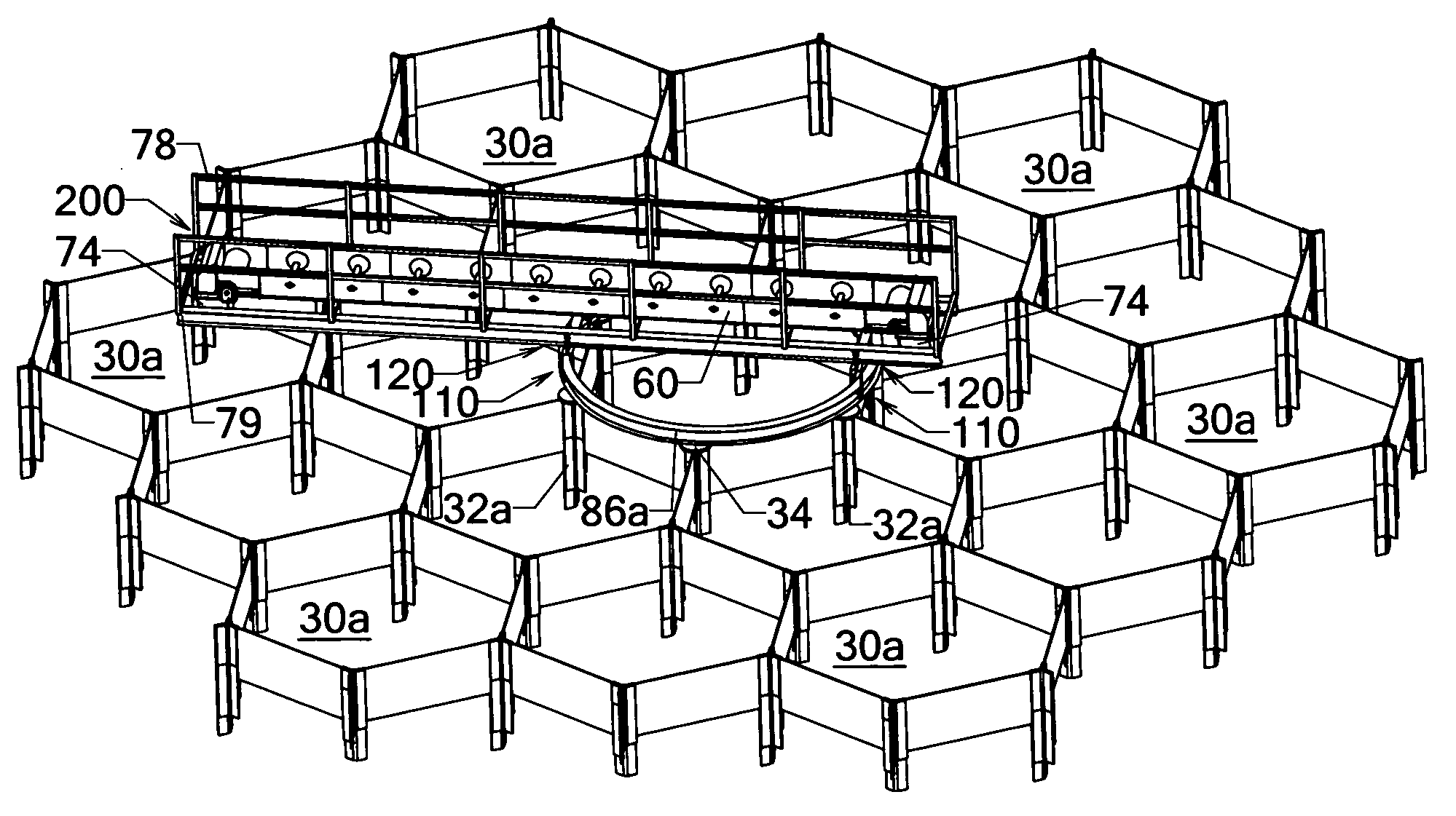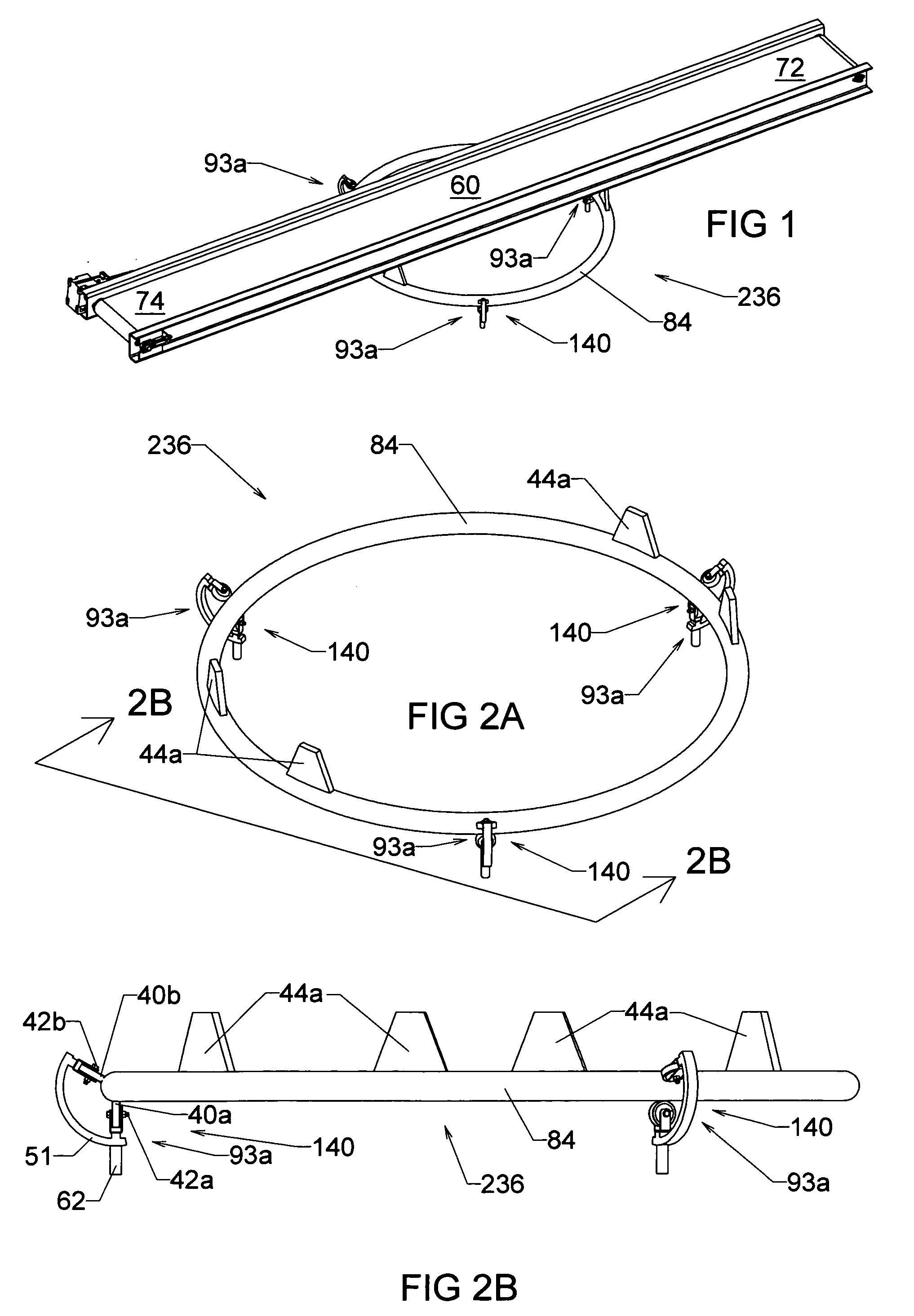Arcuate guide apparatus and method for conveyor(s)
- Summary
- Abstract
- Description
- Claims
- Application Information
AI Technical Summary
Benefits of technology
Problems solved by technology
Method used
Image
Examples
Embodiment Construction
—FIGS. 1, 2A, AND 2B
[0252] All of the of the prior art cited, whether with or without a central support and / or control mechanism, only uses a one-wheel trolley. The addition of a second wheel to a trolley that is a component of a multiple trolley guide assembly provides significant advantages to a track-and-trolley conveyor guidance system. FIG. 1 shows an apparatus of a track-and-trolley conveyor guidance system 236 that comprises a guide assembly 140 attached to a conveyor 60. System 236 is the simplest embodiment of this invention while providing all of the desired characteristics. System 236 guides conveyor 60 along the radial path of a track 84, as conveyor 60 is subjected to forces or loads associated and not associated with moving conveyor 60. System 236 can refer to a method or to an apparatus. System 236 can serve a plurality of bins, primarily for distributing material to the bins, and, to a limited degree, to claim material from the bins.
[0253]FIG. 2A is an isometric vie...
PUM
 Login to View More
Login to View More Abstract
Description
Claims
Application Information
 Login to View More
Login to View More - R&D
- Intellectual Property
- Life Sciences
- Materials
- Tech Scout
- Unparalleled Data Quality
- Higher Quality Content
- 60% Fewer Hallucinations
Browse by: Latest US Patents, China's latest patents, Technical Efficacy Thesaurus, Application Domain, Technology Topic, Popular Technical Reports.
© 2025 PatSnap. All rights reserved.Legal|Privacy policy|Modern Slavery Act Transparency Statement|Sitemap|About US| Contact US: help@patsnap.com



